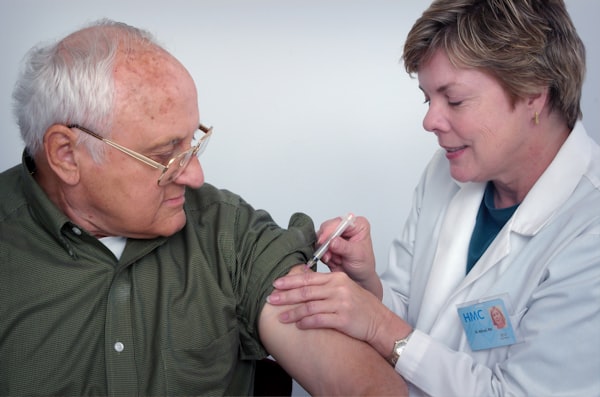The Rise of Caregiver Robots: Exploring the Impact of Automated Caregiving
Imagine a world where caregiver robots assist human caregivers in providing personalized care for older adults, disabled individuals, and even children. The future is not far off, and it promises to revolutionize the way we approach caregiving.

Imagine a world where caregiver robots assist human caregivers in providing personalized care for older adults, disabled individuals, and even children. The future is not far off, and it promises to revolutionize the way we approach caregiving. In today's world we are experiencing a human labor shortage. In our country, we presently have more older people than youth. The decreased birth rates and advanced technology in health care and medical science has us living longer, but not always healthier.
As we face a direct care workers shortage, family members are faced with providing care to their family members. The family caregiver is providing quality and personalized caregiver in the home, spending time with their loved ones as a companion and taking care of making sure their loved one takes their medicine and helps with daily activities. They provide social interaction that is so desperately needed . So many older people suffer from loneliness. Many family caregivers do not realize that the expected caregiving journey, on average , is 6 to 8 years. Some family members are providing care for as long as 20 years.
Let's explore the rise of caregiver robots, discuss their potential benefits and challenges, and examine strategies for effective robot-assisted caregiving. Join us as we delve into the fascinating world of automated caregiving, where technology and human touch work together to create better care for all. Will the development of robots make caregiving easier or more challenging? Will researchers find robot malfunctions give human caregivers more work? Let's explore. Over the next year, I am going to introduce you to the latest and greatest technology that science has to offer and we will monitor and discuss what researchers are discovering about the development and acceptance by society of caregiver robots
Short Summary
- Robot caregiving is rapidly changing the future of providing quality care to elderly and our loved one with dementia. This technology is becoming increasingly popular due to a need for additional caregivers, as we face staff shortages of nurses and direct care workers.
- The risk and potential challenges allowing robots to to provide care to loved ones is the loss of empathy and human connection and increased feelings of social isolation To the point, we must address when introducing robot caregivers into the eldercare system, such as in nursing homes and assisted living, or even in the daily lives of older people in their homes. We want to maximize benefits & minimize risks over the use of human caregivers.
- Responsible integration requires striking a balance between technology & human touch through collaborative models while considering ethical guidelines & promoting cultural sensitivity.
The Emergence of Caregiving Robots

As the world's population ages, the need for caregiving services is growing rapidly. In response, robotics developers are creating innovative solutions to assist human caregivers in providing quality care for older adults and those with dementia.
Caregiving robots are becoming increasingly popular around the world, with different types of robots being used for various caregiving tasks. From humanoid robots designed to mimic human interaction to robotic devices specifically tailored for nursing home settings, the future of caregiving is rapidly evolving, powered by cutting-edge technology and artificial intelligence.
Global Adoption of Caregiving Robots

While robot caregivers are still relatively uncommon in the U.S., they are gaining popularity in countries like Japan, where the government has allocated a significant portion of its budget to developing carebots. The global personal robot market, including robot caregivers, is expected to grow rapidly in the coming years as more countries face the challenges of an aging population and the need for additional caregiving workers.
As robot caregivers become more widespread, it is essential to consider the potential effects on human caregivers' employment, as well as the quality of care provided to older adults and their families.
Different Types of Caregiving Robots
There are several types of caregiving robots available, each designed to address specific needs and tasks. For example, the Dinsow eldercare robot, Care-o-bot, Pepper and NAO robots, BeanQ, and ElliQ all offer unique features and capabilities to assist human caregivers.
Robots like Pepper and NAO have advanced algorithms that can detect facial expressions, body language and vocal tones. They can adjust their own faces and voices to replicate human interaction. They can also remind residents to exercise and eat, lead them in dance, and tell jokes to keep their minds sharp.
By providing both physical assistance and emotional support, these robots play a vital role in enhancing the lives of older adults and complementing the efforts of human caregivers.
The Role of Robotics in Health Care

Robotics is not only transforming caregiving, but also playing a significant role in the broader health care industry. Robots can assist with surgical procedures, manage medications, monitor patients, clean and disinfect facilities, store and distribute medicines, and even help with administrative and logistical tasks.
By automating these mundane tasks, robots free up healthcare professionals to focus on more complex and meaningful aspects of patient care, ultimately improving patient outcomes.
Potential Challenges in Robot Caregiving
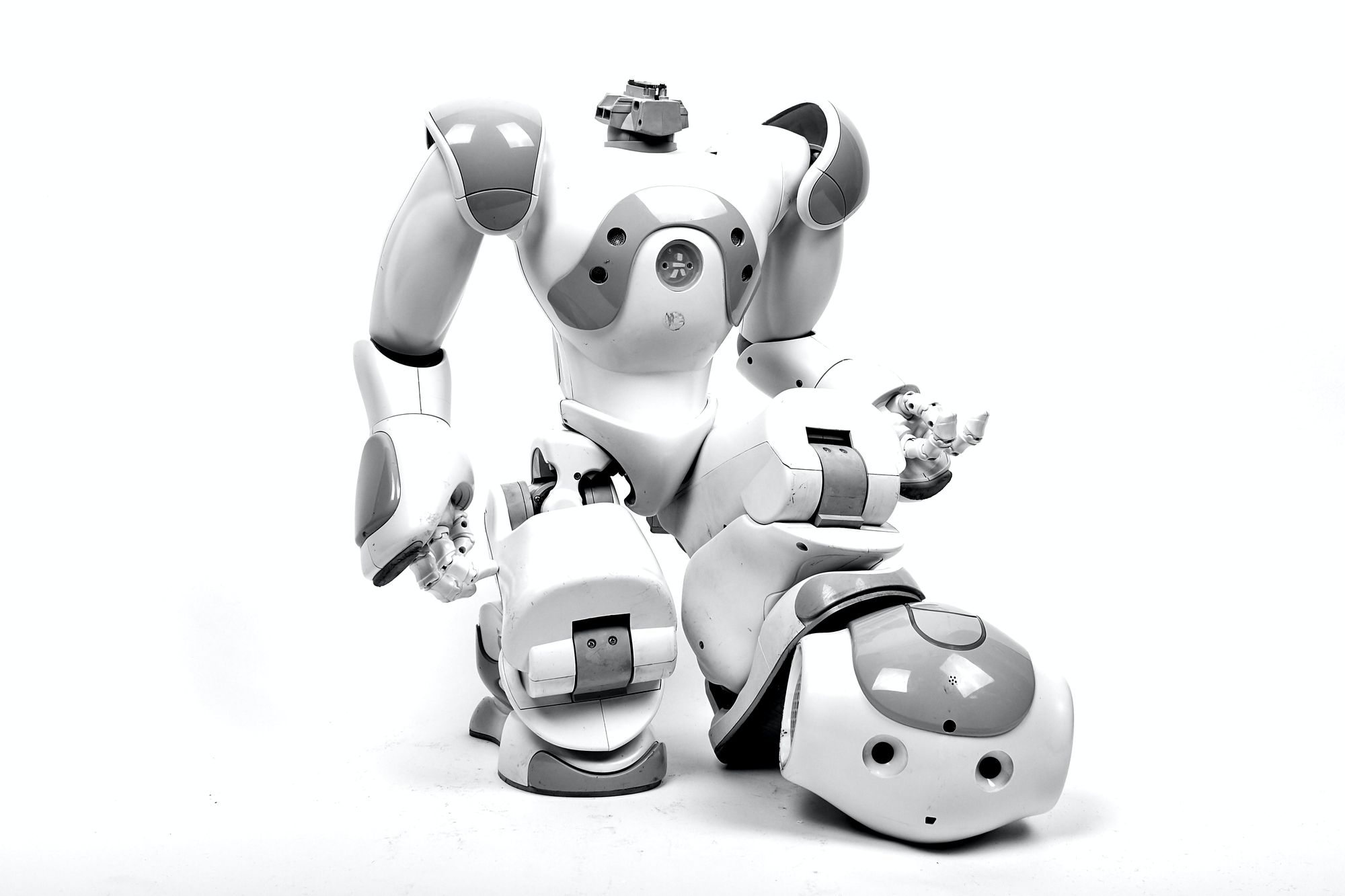
Despite the promise of improved care and efficiency, robot caregiving also presents potential challenges that must be carefully considered. The loss of empathy and human connection, ethical considerations in robotic care, and effects on human caregivers' employment are all concerns that need to be addressed as we move towards a future where robots play a more prominent role in caregiving.
By acknowledging and addressing these challenges, we can ensure that the benefits of robot caregiving are maximized while minimizing any potential risks.
Loss of Empathy and Human Connection
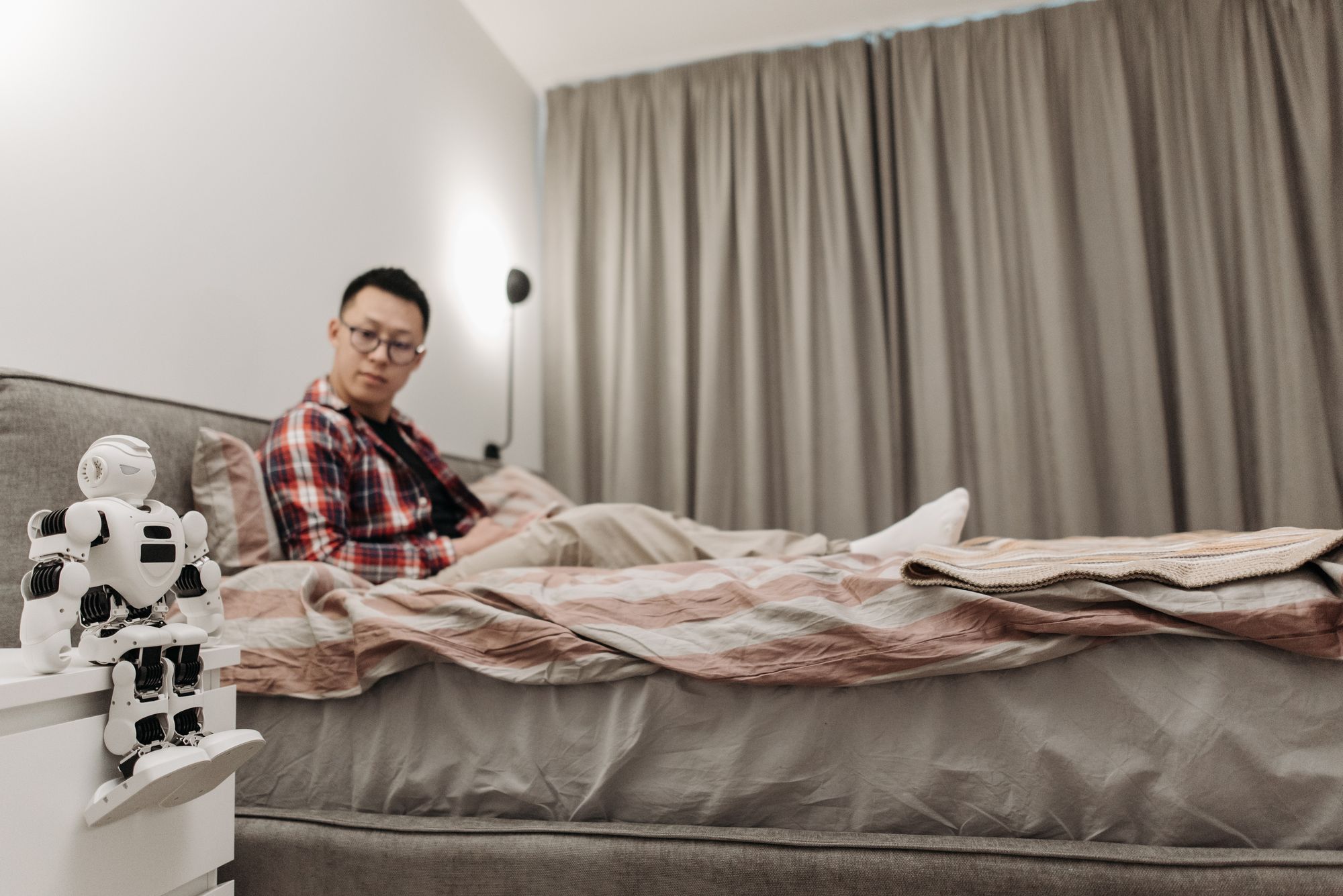
One of the most significant concerns about robot caregiving is the potential loss of empathy and human connection.
The Pew Research Center reports that more than half of the elderly express feelings of loneliness and social isolation. While robots can perform various tasks and mimic human interaction to some extent, they may not be able to provide the same level of emotional support and understanding that human caregivers can offer.
This loss of empathy could negatively impact the care recipients' mental health and well-being, making it crucial to strike a balance between the efficiency of robots and the emotional support provided by human caregivers.
Ethical Considerations in Robotic Care
As robot caregiving becomes more prevalent, ethical considerations must be taken into account. Issues such as autonomy, privacy, dignity, bias, safety, transparency, algorithmic fairness, and data privacy are all crucial aspects that need to be addressed to ensure the responsible and ethical use of robots in caregiving.
By carefully considering these ethical concerns and developing guidelines and regulations, we can ensure that robot caregiving is implemented in a manner that respects the rights and needs of care recipients.
Effects on Human Caregivers' Employment

The growing use of robots in caregiving also raises concerns about the potential impact on human caregivers' employment. The introduction of robots could lead to job displacement, job creation, or job transformation for human caregivers. While robots may alleviate some of the physical workload and help address staff shortages in healthcare settings, their increased use could also create new challenges for human caregivers and change the nature of caregiving work.
One example I was reading about was the robot malfunctions that occured in nursing homes in Japan. The robot malfunctions caused more work for the human caregivers and many times the robots ended up placed in a closet.
The Japanese government's budget has been addressing the the growing aging population for decades. Japan has taken a very proactive approach to aging and the science of technology, as Japan's population, like the US, has a growing aging population and not enough youth to provide care. This is due to lower birth rates globally.
As we continue to develop and implement robot caregiving, it is essential to consider the potential effects on human caregivers and the overall caregiving workforce.
Assessing the Demand for Robot Caregivers
The demand for robot caregiving is growing due to the increasing elderly population and the need for more caregiving workers. As more people turn to robots for assistance, it is vital to strike a balance between technology and human touch in caregiving.LETS we will explore the factors contributing to the growing demand for robot caregivers, including the growing elderly population, the state of the human caregiving workforce, and the importance of maintaining a balance between technology and human interaction in caregiving.
The Growing Elderly Population and Caregiving Needs

The world's elderly population is growing rapidly, with the number of people aged 65 and older estimated to double by 2050 and triple by 2100. This increase in the elderly population places significant pressure on caregiving services, as more people require assistance with daily activities and healthcare needs.
The growing demand for robot caregivers can be attributed to this demographic shift and the need for additional caregiving workers to provide support and care for the aging population. We also have over 1 million newly diagnosed individuals with dementia every year. The growing number of dementia patients and their increased needs is giving robot researchers a different challenge
The State of Human Caregiving Workforce
The human caregiving workforce is facing limitations, with an estimated 53 million caregivers in the United States juggling caregiving responsibilities and employment. Most of these caregivers are female, and the number of available direct care workers is limited, resulting in a growing need for alternative solutions, such as robot caregivers.
To meet the increasing demand for caregiving services, it is crucial to explore innovative solutions like robot caregiving that can supplement the efforts of human caregivers and alleviate some of the challenges they face in providing care.
Balancing Technology and Human Touch in Caregiving
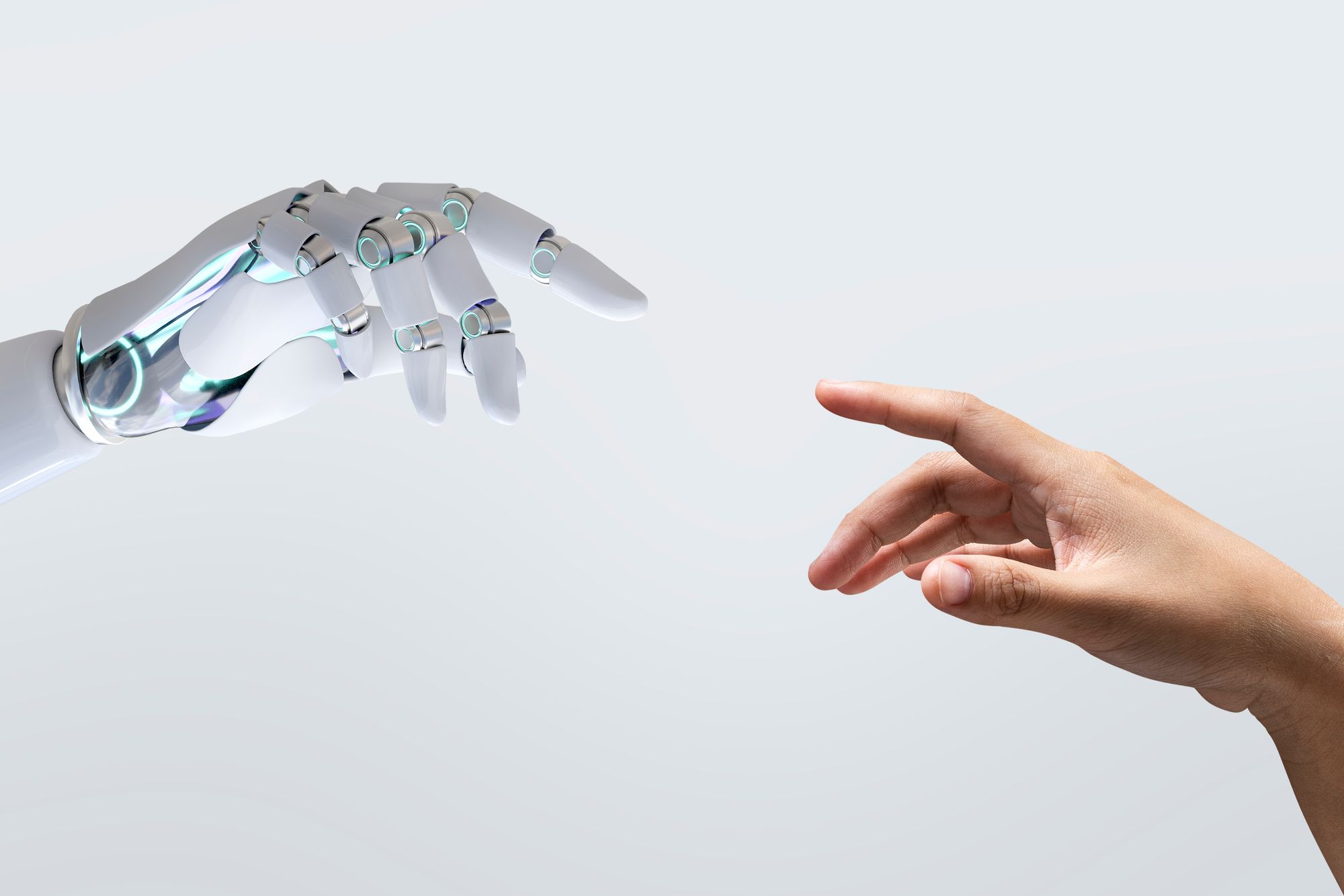
While technology can offer efficiency and convenience in caregiving, the importance of human touch and emotional support cannot be underestimated. It is essential to maintain a balance between technology and human touch in caregiving so that robots are used to supplement, rather than replace, human caregiving.
By ensuring that both technology and human interaction play a role in caregiving, we can provide the best possible care for those in need while preserving the essential human connection that is at the heart of caregiving.
Integrating Robots into the Caregiving Ecosystem

As the demand for robot caregivers grows, it is crucial to integrate them into the caregiving ecosystem in a responsible and ethical manner. This can be achieved through collaborative care models, where robots and human caregivers work together to provide coordinated care to patients.
I want to discuss the various ways in which robots can be integrated into the caregiving ecosystem, the pros and cons of robot caregivers, and the importance of implementing robots with humility and patience.
Collaborative Care Models

Collaborative care models are team-based approaches to healthcare that involve multiple healthcare providers working together to provide coordinated care to patients. These models have been shown to be effective in managing mental disorders in primary care settings and can be applied to robot caregiving as well.
By incorporating robots into collaborative care models, we can ensure that they are used to complement the efforts of human caregivers and provide the best possible care for patients. If you follow my podcasts, you know I encourage the development of a person centered patient care profile. This helps the health care providers see your family member as a person, instead of a diagnosis. I think it would extraordinary for every elderly person to have a robot that is programmed with their person centered profile. The robot would be able to provide information on the likes and dislikes of each individual. For example, I love rooibos chai tea with my breakfast.
Wouldn't it be great that it prepares my tea for me. Then asks me about my life. Of course, my wish list, in my mind, the development of person centered robots would share stories of our lives, by asking questions and recording this information for other to hear at a later time. Or, as a person with dementia declines, they can listen to the stories they shared, maybe with pictures on the robot's screen to stimulate memories. Of course, with my luck, my robot would make me exercise and monitor my intake of sweets! I guess there are a few downsides on this subject.
Pros and Cons of Robot Caregivers
While robot caregivers offer numerous benefits, such as providing physical assistance and task support, there are also some downsides to consider. The potential lack of empathy and human connection, ethical issues, and the impact on human caregivers' jobs are all concerns that need to be addressed as we move towards a future where robots play a more prominent role in caregiving.
By carefully weighing the pros and cons of robot caregivers, we can develop strategies and guidelines to ensure that their use is both beneficial and responsible.
Implementing Robots with Humility and Patience
When introducing robots into the caregiving ecosystem, it is essential to do so with humility and patience. This approach ensures that robots are integrated in a manner that respects the needs of care recipients and the expertise of human caregivers, while also acknowledging the potential risks and challenges associated with robot caregiving.
By implementing robots with humility and patience, we can create a caregiving ecosystem that benefits from the advantages of technology while preserving the essential human connection at the heart of caregiving.
Strategies for Effective Robot-Assisted Caregiving

To make robot-assisted caregiving more effective, several strategies can be employed, such as providing physical assistance and task support, mental health and emotional support, and enhancing quality of life for care recipients.
So let's delve into these strategies and explore how they can be used to ensure that robot caregiving is as effective and beneficial as possible for both care recipients and their caregivers.
Physical Assistance and Task Support
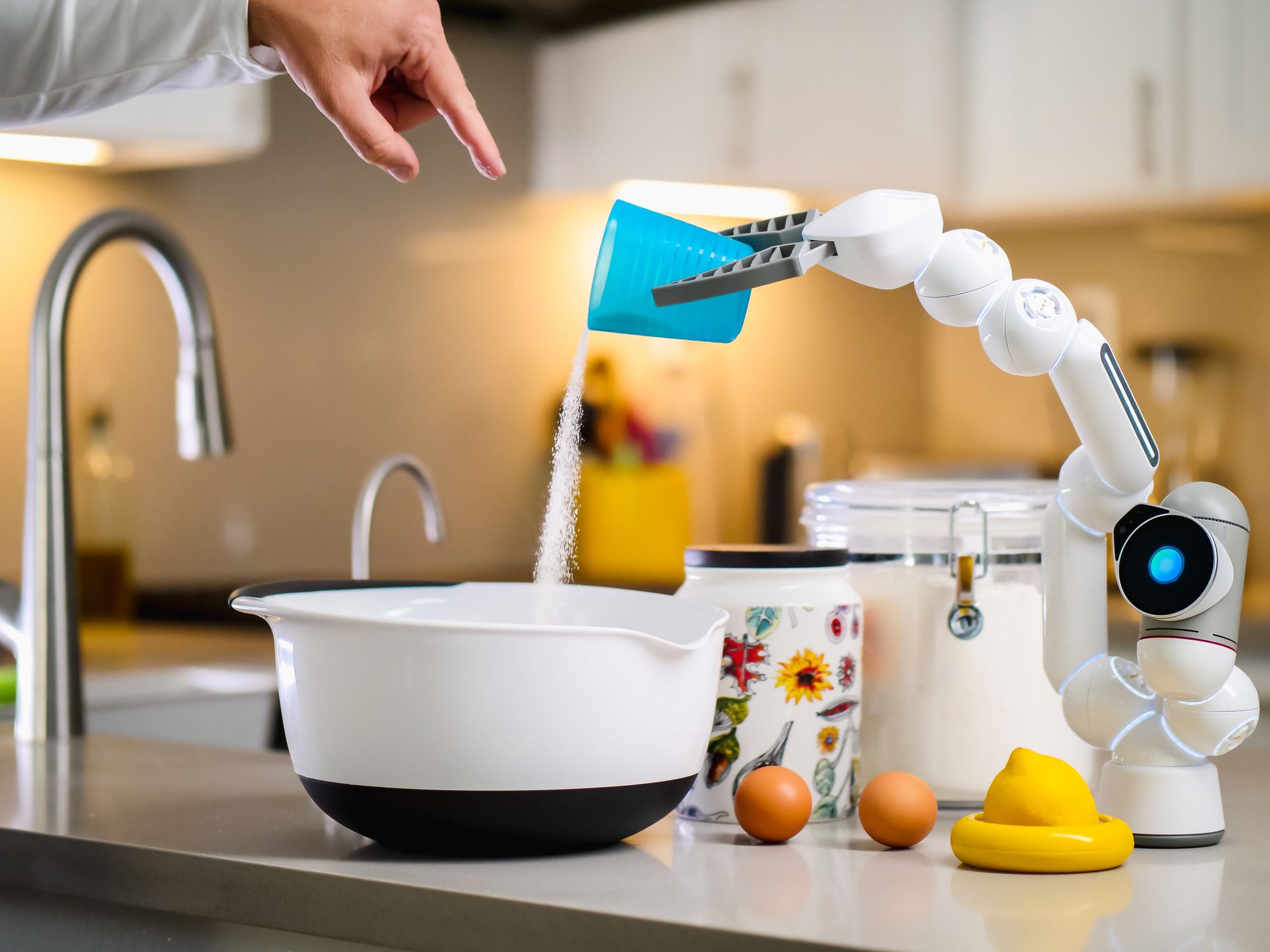
Providing physical assistance and task support to care recipients is an essential aspect of robot-assisted caregiving. Robots can help with daily activities such as bathing, dressing, and meal preparation, thereby alleviating some of the burden on human caregivers and allowing them to focus on more complex aspects of care. As an RN, I am trying to picture how this is done. I wonder if a humanoid robot functions as a human care worker. I am trying to imagine and army of humanoid robots providing intimate care, bathing, dressing, brushing a person teeth and making sure they comb their hair. I am looking forward to learning how researchers and development of carebots meets this challenge.
Researchers believe offering this support, robot caregivers can improve the overall quality of care provided to those in need, while also complementing the efforts of human caregivers. We shall see.
Mental Health and Emotional Support
In addition to providing physical assistance and task support, it is important for robot caregivers to offer mental health and emotional support to care recipients. This can include companionship, engaging in conversation, and providing emotional support, all of which can contribute to the care recipient's mental health and well-being.
By addressing the emotional needs of care recipients, robot caregivers can play a crucial role in enhancing their overall quality of life and promoting positive mental health outcomes. One of the issues humans face is we develop emotional attachment to their robots. This is a dilemma that is giving robots and their creators a challenge. Robots are unable to reciprocate feelings or develop attachments. The idea that robots become a companion seems far fetched. But, when I observed seniors in a nursing home interacting with a robotic pet, I too, fell in love with these interactive creatures. In fact, I encourage any pet lover with dementia to invest in one of these sweet creatures.
Enhancing Quality of Life for Care Recipients
Robot caregivers have the potential to significantly improve the quality of life for those receiving care. By providing physical assistance, mental health and emotional support, and empowering care recipients to take control of their own lives, robots can help promote overall well-being and independence.
As we continue to develop and implement robot caregiving, it is essential to focus on strategies that enhance the quality of life for care recipients, ensuring that their needs are met and that they can maintain their dignity and sense of self-worth.
Design Principles and Ethical Guidelines for Caregiving Robots
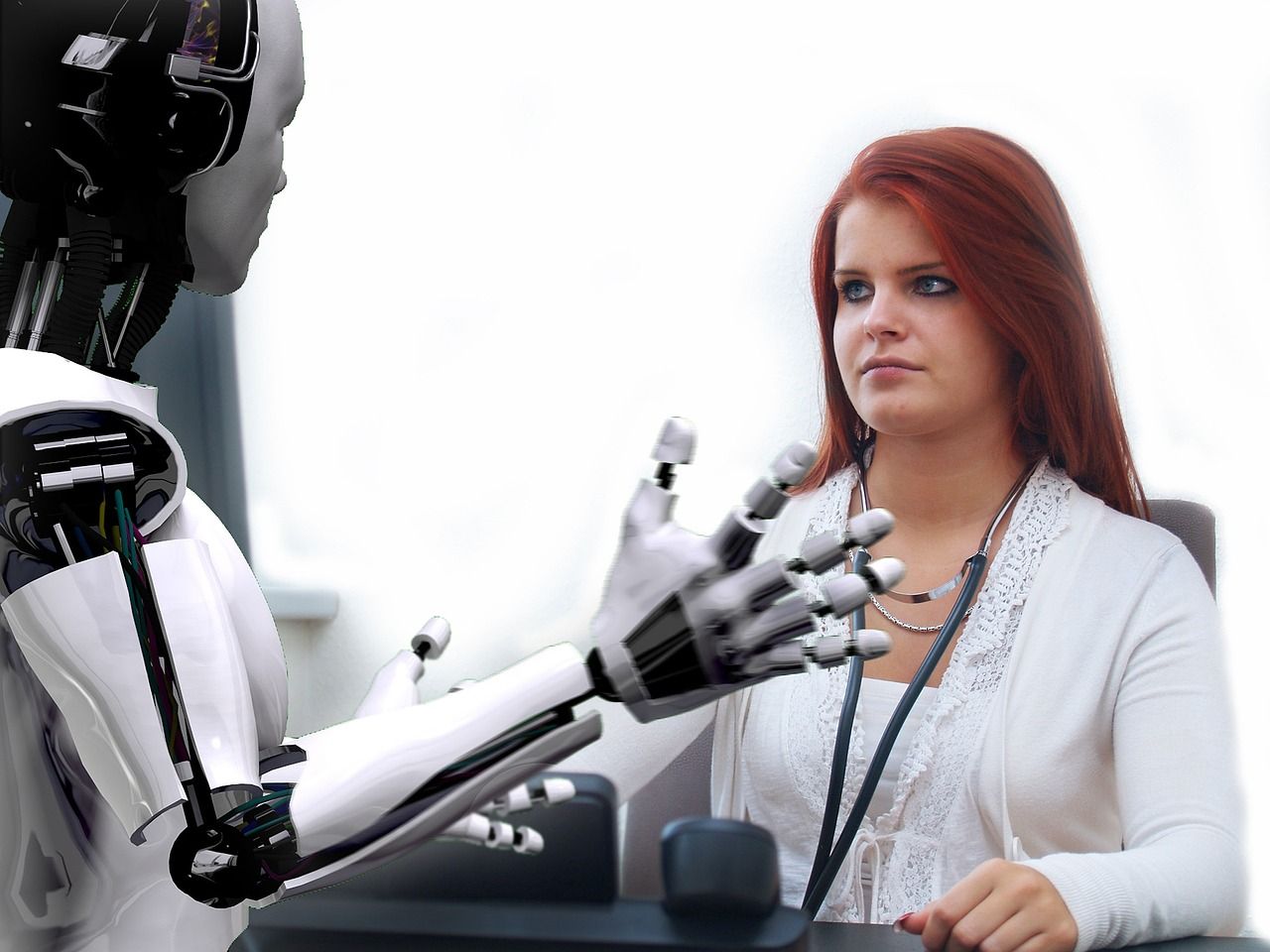
As we move towards a future where robots play a larger role in caregiving, it is essential to establish design principles and ethical guidelines to ensure their responsible and effective use.
So let's explore how caregiving robots can be designed to empower care recipients, balance assistance and independence, and address emotional dependency and ethical concerns.
Empowering Care Recipients
An essential design principle for caregiving robots is to empower care recipients, allowing them to take control of their own lives and make decisions about their care. This can be achieved by designing robots that are user-friendly, customizable, and able to adapt to the unique needs of each care recipient.
By empowering care recipients, robot caregivers can help promote independence and self-sufficiency, ultimately leading to better health outcomes and an improved quality of life.
Balancing Assistance and Independence

Another crucial design principle for caregiving robots is to strike a balance between providing assistance and promoting independence. While robots can help care recipients with daily tasks and provide support, they should not create a sense of dependency or undermine the care recipient's sense of self-worth. I am an old rehab nurse. One of the hardest things that a family caregiver must learn, is to allow your loved one to do as much as they can for themselves, for as long as possible. This is painful for many caregivers to watch a family member struggle with dressing, eating or other activities. Human caregivers must learn patience. I understand that it is faster and easier to just do it. But, it creates dependency and impacts the care recipients self esteem and well being. I would love to see a robot caregiver encourage and provide support only when needed.
By balancing assistance and independence, robot caregivers can ensure that they are providing the necessary support while still fostering a sense of autonomy and dignity in care recipients. This is a lesson our human caregivers would benefit from learning.
Addressing Emotional Dependency and Ethical Concerns
Finally, it is important to address emotional dependency and ethical concerns when designing caregiving robots. This includes ensuring that robots do not foster unhealthy emotional dependencies or violate the privacy and autonomy of care recipients.
By adhering to ethical guidelines and design principles, caregiving robots can be developed in a manner that respects the rights and needs of care recipients, while also providing the necessary support and assistance to improve their quality of life.
Addressing Social and Cultural Factors in Robotic Caregiving
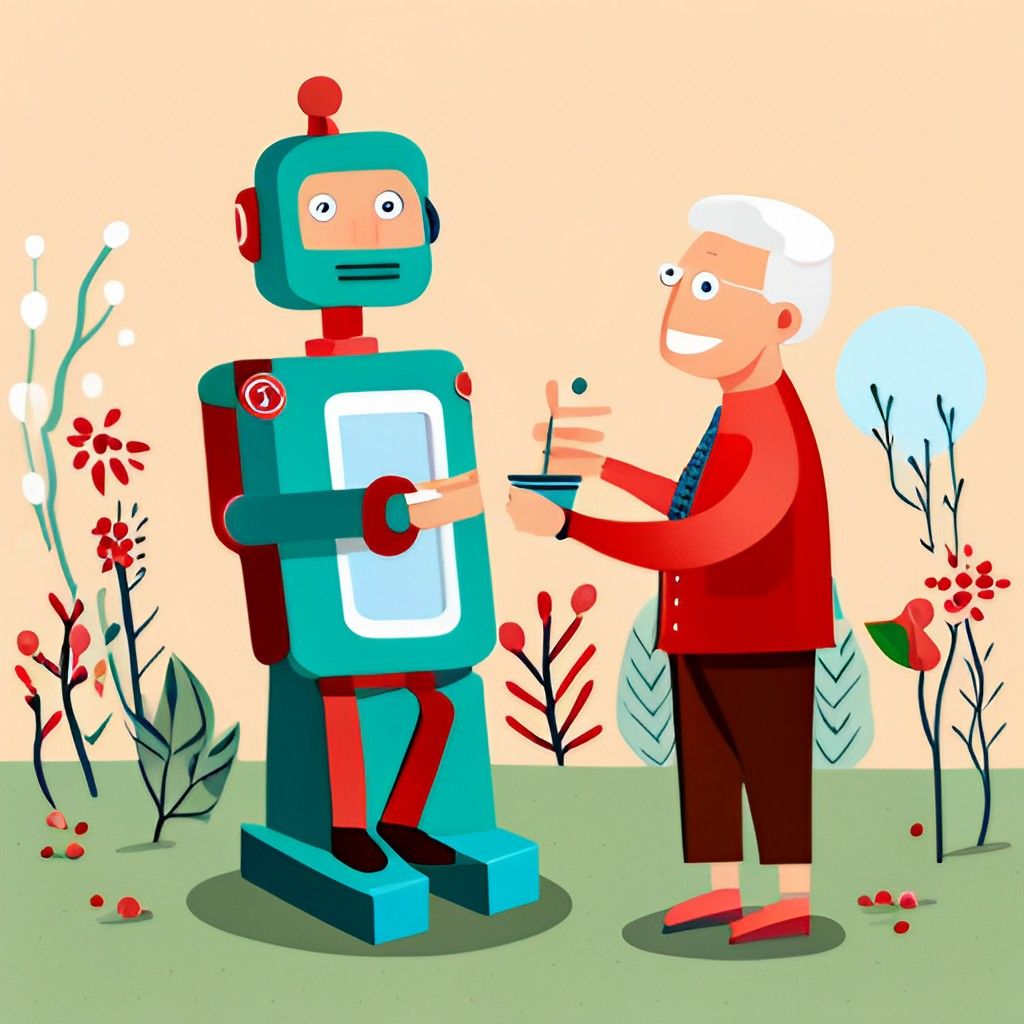
In addition to the design principles and ethical guidelines discussed earlier, it is essential to address social and cultural factors in robotic caregiving. This includes ensuring accessible and inclusive design, overcoming socioeconomic barriers to adoption, and promoting cultural sensitivity in robot caregiving.
So. let's explore how these factors can be addressed to ensure that robot caregiving is both effective and inclusive for all members of society.
Ensuring Accessible and Inclusive Design
Accessible and inclusive design is a crucial aspect of robotic caregiving. By creating robots that are easy to use and understand for both caregivers and care recipients, we can ensure that everyone, regardless of disability, age, or cultural background, can benefit from robot-assisted caregiving.
Here is this country, we have so many people that have come to live from all over the world. Many seniors never learned English. I cannot tell you how many times I have had to provide care for someone that did not understand what I was saying. Dementia patients, that speak several different languages, as the dementia disease progresses, often revert back to their mother language. I love the fact that a robot would be able to be there to translate for both the human caregiver and the humanoid robot.
Accessible and inclusive design also involves allowing for customization and personalization, ensuring that robots can be tailored to meet the unique needs of each care recipient.
Overcoming Socioeconomic Barriers to Adoption
Addressing socioeconomic barriers to the adoption of robot caregiving is essential to ensure equal access to care and prevent the exacerbation of existing healthcare disparities. This can involve offering subsidies and tax breaks to those who cannot afford robot caregivers, providing education and training for those who are unfamiliar with the technology, and forming public-private partnerships to ensure widespread access to robot caregiving services.
By overcoming these barriers, we can create a more equitable and inclusive caregiving ecosystem that benefits everyone, regardless of their socioeconomic status.
Promoting Cultural Sensitivity in Robot Caregiving
Finally, it is important to promote cultural sensitivity in robot caregiving. This involves designing robots that are aware of and respectful of different cultures, providing training and education to those who are unfamiliar with the technology, and ensuring that robots can recognize and adapt to various cultural norms and values.
By fostering cultural sensitivity in robot caregiving, we can ensure that robots are embraced by diverse populations and provide effective, tailored care to individuals from all walks of life.
Summary
As we have explored throughout this audiocast, the rise of caregiving robots holds great potential for revolutionizing the way we approach caregiving. By addressing the various challenges and considerations associated with robot caregiving and implementing effective strategies, design principles, and ethical guidelines, we can harness the power of technology to improve the lives of care recipients and alleviate the burden on human caregivers. As we continue to innovate and develop new solutions in the field of caregiving, it is essential that we strive to create a more compassionate, inclusive, and effective caregiving ecosystem that benefits everyone involved.
Before we go, I want to answer a few frequently asked questions that you may want answered.
Frequently Asked Questions
How much does the robot caregiver cost?
With an estimated cost between US$168,000 and US$252,000, a caregiver robot is quite an investment compared to the cost of a full-time human caregiver for three years.
What is caregiver robot?
Caregiver robots are designed to assist humans in providing care to the elderly and others. They can be used in both nursing homes and other residential settings, helping to relieve the burden on humans who may not have the capacity to manage all the tasks associated with daily care.
Caregiver robots are sophisticated machines that are designed to provide assistance to human caregivers in the form of physical and emotional support. These robots can help with various tasks around the home, from cleaning and cooking, to playing games and providing companionship. They are an invaluable asset to those caring for others.
Is there a robot that helps the elderly?
Yes, there is a robot that can help the elderly. Care robots come in various shapes and sizes and can offer physical care assistance, such as helping people get up, monitoring their physical activity, and providing assistance with eating and bathing.
These robots can also provide emotional support, such as providing companionship and conversation, and can even help with cognitive tasks, such as reminding people to do something.
Can AI replace caregivers?
No, AI cannot replace caregivers. AI can be used to assist and supplement care, but ultimately it requires the knowledge and expertise of human caregivers for successful patient outcomes. AI can help reduce the burden on healthcare professionals by automating mundane tasks, freeing up valuable time for more pressing matters.
Overall, AI has the potential to provide much-needed support to caregivers, but should not be viewed as a replacement for them. Human skills and experience are essential when it comes to providing quality and compassionate care. AI can play an important supporting role, helping to lighten the load and allowing caregivers to focus on the areas in which they excel.
All of our guides, downloads, worksheets, Premium courses
Click Subscribe To Get Started.
Our Resource section can help you find the information and tools that you need. We have courses, videos, checklists, guidebooks, cheat sheets, how-to guides and more.
You can get started by clicking on the link below. We know that taking care of a loved one is hard work, but with our help you can get the support that you need.
Click here to go to Resource Section now!





